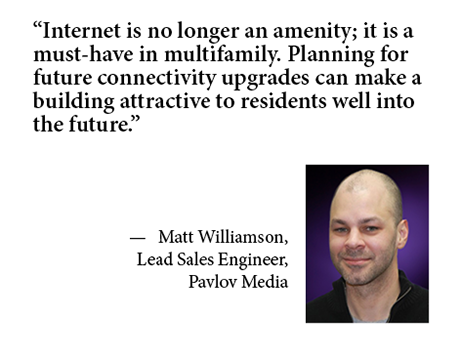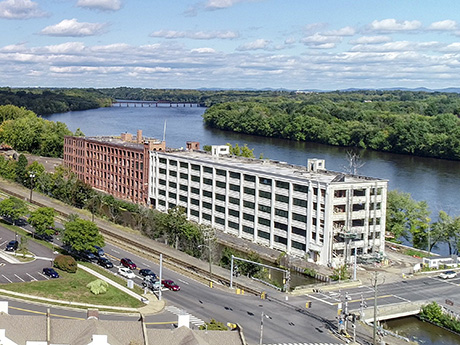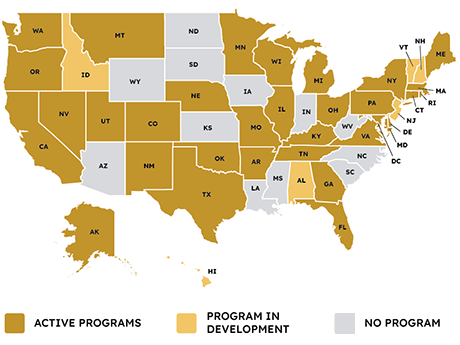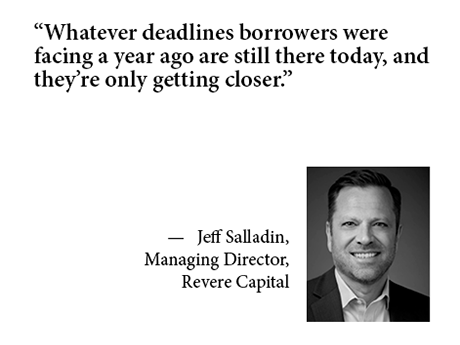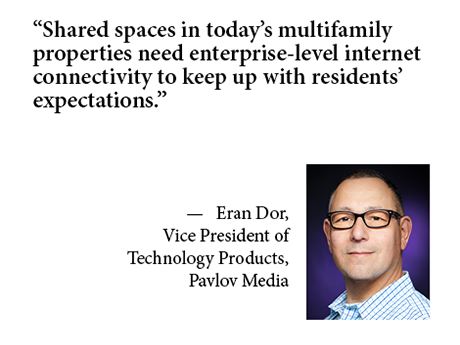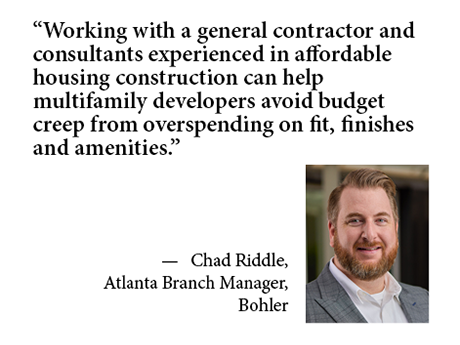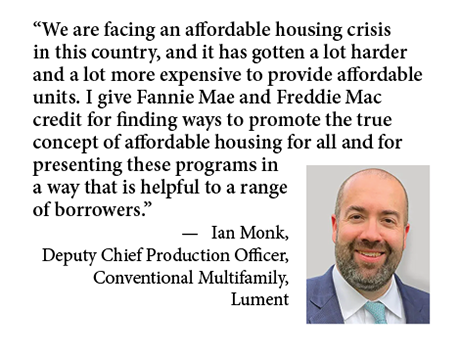In the rapidly evolving landscape of multifamily technology, owners and operators face a critical challenge to staying competitive. As demand for high-speed internet and robust connectivity grows, it is essential to adapt quickly. However, constantly upgrading infrastructure can be prohibitively expensive and time-consuming. The solution lies in future-proofing properties — building an adaptable infrastructure that can support unknown future technological needs. “Future-proofing is a matter of having infrastructure capable of supporting what we don’t know we will want later,” says Matt Williamson, lead sales engineer at Pavlov Media, which provides Wi-Fi, fiber-optic internet service and managed digital services to multifamily properties. Future-proofing involves implementing scalable and flexible communication systems that accommodate both current and emerging digital demands. By focusing on future-proofing, multifamily properties can meet residents’ increasing expectations for high-speed internet and comprehensive Wi-Fi coverage while also reducing operational costs and enhancing overall efficiency. Balance Current Needs with Future Trends “Multifamily residents now expect extremely high-speed internet connections in their units and throughout the entire property, including common areas like gyms, conference rooms, pools and walking paths,” Williamson says. Residents want robust internet connections for activities such as streaming, video calls and remote home monitoring. The importance of upload speeds …
Content Partner
Content PartnerDevelopmentFeaturesLeasing ActivityMidwestMultifamilyNortheastPavlov MediaSoutheastTexasWestern
AcquisitionsContent PartnerDevelopmentFeaturesIndustrialLeasing ActivityLee & AssociatesLoansMidwestMultifamilyNortheastOfficeRetailSoutheastTexasWestern
Lee & Associates Second Quarter Report: Industrial, Office Market See Continued Challenges While Retail, Multifamily Trends Follow Region-Specific Patterns
In the first half of 2024, high interest rates led to decreased demand, higher vacancy rates, reduced construction starts and lower property sales in industrial and office, according to Lee & Associates’ 2024 Q2 North America Market Report. Meanwhile, retail saw minimal development and continued low vacancies. Retail rent growth was particularly strong in the South and Southwest. Finally, high demand for multifamily, coupled with a sudden influx of supply in the second quarter of the year, has created a market where outcomes are highly tied to region. Midwest and Northeast multifamily markets have remained stronger than their counterparts in the South and Southwest, while Western markets saw mixed growth. Lee & Associates has made their full market report available here (with complete breakdowns of cap rates by city, market rents, vacancy rates, square footage information and more). The summaries for the industrial, office, retail and multifamily sectors below provide detailed insight into the trends and trajectories likely through the end of 2024. Industrial Overview: Activity, Growth Checked by High Interest Rates Industrial market performance across North America continued to downshift in the first half of this year. Although net absorption remains positive, demand for industrial space has fallen to the lowest levels …
Affordable HousingBohlerContent PartnerDevelopmentFeaturesMidwestMultifamilyNortheastSoutheastTexasWestern
Cracking the Code: Winning Strategies for Affordable Housing in Any Market
Frustrated by high costs and a lending crunch for market-rate multifamily projects, savvy mainstream developers are seeking opportunities to build affordable housing. But what constitutes opportunity in a sector reliant on agency lending, community stakeholders and controlled rents? Definitions of “opportunity” in affordable housing vary widely, and favorable elements often involve additional and unique challenges. Not only must developers identify opportune site conditions, but they must also evaluate prospects to compete for funding, secure municipal approvals and win community support. And they need to complete the project within required timeframes in order for the asset to qualify as a good opportunity. REBusiness asked experts from two firms at the forefront of affordable housing development about what affordable housing “opportunity” looks like — and about the strategies they use to transform promising sites into viable projects. Beacon Communities is an established developer of affordable, market-rate and mixed-income housing, while Bohler’s land development consulting and site design services have helped clients identify and act on commercial real estate opportunities for more than 35 years. “We look at any development opportunity through three lenses,” says LeAnn Hanfield Curtin, vice president of development at Beacon. “Those are the availability of sites, ability to get …
It may have taken more than a decade, but after starting out as a niche financing vehicle to create more energy-efficient and resilient buildings, the commercial property assessed clean energy (C-PACE) program has arguably achieved mainstream acceptance. Roughly 40 states and Washington, D.C., now either offer or are developing C-PACE programs. Over the last year alone, Georgia, Hawaii, New Mexico, Minnesota and Idaho passed legislation enabling or substantially improving the financing tool, points out Rafi Golberstein, CEO of PACE Loan Group, a direct lender of C-PACE headquartered in Minneapolis, Minn. What’s more, he adds, New Jersey and North Carolina are among states that in the coming months are expected to advance bills authorizing the use of C-PACE, or PACE for short. Given the current partisanship within the country, one of the most revealing characteristics of PACE’s growing appeal has been its ability to cross the political aisle, Golberstein observed. PACE’s popularity in particular has ascended over the last several months as developers have sought fresh capital to enhance their financial flexibility in a rising interest rate environment. “PACE is really turning out to be a bipartisan issue, as many state lawmakers are realizing that it is a great financing tool …
Last fall’s ebullience over the Federal Reserve’s likelihood of cutting the federal funds rate early and frequently in 2024 quickly faded as inflation remained too high for the Fed’s liking. Wall Street traders who make wagers on the Fed’s actions keep pushing their rate cut bets further into the year, according to CME Group, a derivatives marketplace. In early March, for example, nearly 75 percent of traders wagered on a rate cut in June. As of early June, less than 2 percent expected one. The most recent Fed meeting, on June 13, has confirmed this assumption that a rate cut is at least months away, if not longer. If and when the central bank cuts rates this year, the cost of capital is unlikely to approach the historically low levels of the last few years. As a result, the growing interest rate mantra of “higher for longer” may be finally convincing commercial property buyers and sellers to meet on pricing. New York-based research organization MSCI Real Assets recently noted that commercial property sales continued to slow in the first quarter of 2024 — a year-over-year decline of 16 percent to $78.9 billion. But it suggested that investors might be encouraged …
Content PartnerDevelopmentFeaturesLeasing ActivityMidwestMultifamilyNortheastPavlov MediaSoutheastTexasWestern
How Developers Use Mix of Technology, Amenities to Attract Residents
The multifamily industry faces a major challenge. Final construction costs have grown 33 percent since 2019 interest rates and operational expenses are sky high; and rents may need to increase, where possible, to make deals feasible — an off-putting reality for residents. One developer solution is smaller apartments, which make units cheaper. There is also a push to add more common-space amenities that are both valuable and less costly to include. These features include rooftop spaces, green areas and decks. However, to make these spaces truly usable for today’s multifamily residents, it is important to make them technologically flexible and to offer easy internet connection. “The floor plans of most new-construction multi-dwelling units (MDUs) today are shrinking, and their amenities are expanding,” says Bryan Rader, president of MDU at networking and internet service company Pavlov Media. According to RentCafe, the average size of newly constructed apartment units fell by almost 6 percent in a decade, with half of that change occurring in the last year. Rader likens it to the “resort-style community” approach, where hotel rooms are small, and guests are encouraged to spend time everywhere else on the property. Similarly, multifamily developers create shared amenities such as comprehensive fitness …
AcquisitionsContent PartnerDevelopmentFeaturesIndustrialLeasing ActivityLee & AssociatesLoansMidwestMultifamilyNortheastOfficeRetailSoutheastTexasWestern
Lee & Associates Report: Industrial, Office Sectors Face Challenges as Retail, Multifamily Show Positive Trends
Economic headwinds such as elevated interest rates and persistent inflation led to mixed outcomes in the first quarter for industrial, office, retail and multifamily sectors, with market observers anticipating a contracting economy, as outlined by Lee & Associates’ 2024 Q1 North America Market Report. On the industrial front, market pressures — including interest rates and supply chain challenges — led to higher vacancy in the United States in the first quarter of the year. U.S. office space experienced its fifth consecutive year of contraction, as office worker attendance stagnated. Additional challenges, in the form of loans maturing in a high-rate environment, signal further challenges in the near future for the office landscape. Continued merchant demand, reduced closures and bankruptcies and limited supply converged to create a feeding frenzy for retail space, with vacancies at historic lows. And finally, geographically based factors drove multifamily markets, many of which (especially in the Midwest and Northeast) experienced a rebound in apartment demand fueled by rising consumer sentiment and moderating inflation, despite supply outpacing demand. Lee & Associates has made their full, first-quarter report available here (with breakdowns of cap rates by city, vacancy rates, market rents, inventory square footage and more). The summaries from each sector …
With elevated prices on everything from land to debt financing, insurance, building materials and labor, developers face an uphill climb attempting to pencil out multifamily projects at a profit. That’s why in 2024, developers are opting for practical and convenient amenities over luxury and choosing builder-friendly suburban locations over complex urban sites. And with diminishing room to raise rents on market-rate apartments, many investors and developers are shifting their attention to affordable and workforce housing, where incentives offset some expenses and, ideally, help position projects to deliver positive returns. “Market-rate developers in our region are starting to change their model to embrace more of an affordable product,” confirms Chad Riddle, Atlanta branch manager at Bohler. “Unfortunately, that puts them behind the eight ball because they may not know the tricks of the trade and they are competing with affordable housing developers that already know the business and are thriving.” There is no single strategy to pencil out a profitable multifamily project, but developers are achieving success by sticking to proven, cost-effective design elements and amenities, avoiding costly missteps and cutting down unnecessary spending throughout the development process. Drawing on affordable housing specialists and other in-house experts, Bohler helps clients avoid …
The emergence of generative artificial intelligence (AI) promises to greatly expand the property industry’s reach and abilities. Generative AI can offer suggestions, compile reports and create various types of content, ranging from video to software code. In the commercial real estate world, generative AI has the potential to harness myriad information to help owners, managers, lenders and investors assess portfolio performance, uncover operating risks and identify opportunities, among other activities, says Jeff Salladin, a managing director with Dallas-based private debt fund Revere Capital. But companies need to begin preparing for it now, he adds. “Commercial real estate can be slow to change — it wasn’t that long ago that mortgage brokers were sending us deals via overnight mail,” observes Salladin. “But whether they’re analysts or leadership teams, someone in your shop should be dipping their toe in the water and testing out AI.” Salladin also points out the need to proceed cautiously with this new technology as it evolves. Humans with expertise need to review what AI generates for the commercial real estate field. AI can narrow the focus of many tasks but cannot substitute for human reviewers or the human ability to critically apply information gleaned. AI Benefits Salladin …
Affordable HousingContent PartnerFeaturesLoansLumentMidwestMultifamilyNortheastSoutheastTexasWestern
Agency Initiatives Entice Traditional Multifamily Owners, Investors to Workforce Housing
A trio of social-impact lending programs is enticing enough to convince market-rate multifamily owners and investors to dip their toes into the affordable housing sector. These recently launched initiatives all promote the creation and preservation of workforce housing. Unlike low-income housing tax credits, Section 8 rent vouchers and other longstanding programs centered on helping families with low and very-low incomes to afford housing, the newest offerings primarily aim to assist missing middle renters — or those with modest-to-low incomes. That’s according to Ian Monk, deputy chief production officer for conventional multifamily at Lument — which is educating its borrowers about the competitive pricing, generous proceeds and potential for lengthy amortization periods available from Fannie Mae and Freddie Mac. “By charter, the government-sponsored enterprises (GSEs) have a duty to help provide housing that is affordable to all people, including families with only moderately low incomes,” Monk says. “In the multifamily arena, they may serve those families in fully dedicated affordable communities, but they can also serve them in conventional, market-rate properties that adopt some affordability initiatives using one of these social-impact loan structures.” The GSEs are making a strong push in 2024 to expand participation in the three social-impact loan products, …


